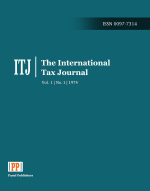Techno-economic and environmental impact of a photovoltaic system to improve energy quality in isolated areas
Keywords:
rural electrification, solar energy, sustainability, carbon footprintAbstract
The lack of access to electricity in isolated areas represents a significant obstacle to the economic development of their inhabitants. Solar photovoltaic technology emerges as a promising solution to address electrification challenges in these areas; However, its implementation faces technical, economic and environmental barriers. The objective of the research was to carry out a technical, economic and environmental analysis of a photovoltaic system designed for an isolated community. The bibliographic review, qualitative and quantitative method was used as a methodology, in addition to PvSyst 7.2, the result was the estimation of energy demand, the analysis of solar potential in the region, the design of the photovoltaic system and the evaluation of energy losses. energy. The system has a power of 180 kWp, the system is designed to meet the energy needs of the community, improve the stability of the electricity supply and reduce dependence on fuel-powered generators. The economic analysis shows a recovery period of 16 years and a generation cost of $0.0826 USD/kWh, competitive with traditional rates. In addition, it is projected that the system will avoid the emission of 2,446.1 tons of CO₂ in 30 years, thus contributing to sustainability and reducing the carbon footprint.
Downloads
References
Barasa, M., & Akanni, O. (2021). Sustainable energy transition for the generation and supply of electricity from renewable and low-carbon sources. frontiers, 9(1), 1-8. doi.org/10.3389/fenrg.2021.743114
Guanacunga, A., Iza, M., & Lasluia, D. (2022). Solar Projects in Ecuador. Cotopaxi Technical University. https://repositorio.utc.edu.ec/
Mera, Jean. P, Rodriguez, M. (2024). Feasibility for rural electrification with photovoltaic technology 593 Digital Publisher, Vol. 9, No. 3 (Issue dedicated to: Multidisciplinary), pp. 1139-1153, https://dialnet.unirioja.es/servlet/articulo?codigo=9535938
Ministry of Energy and Mines. (September 3, 2019). resource and energy. Retrieved from https://www.recursosyenergia.gob.ec/manabi-tendra-la-central-de-energia- photovoltaic-largest-in-the-country/#:~:text=The%20Aromo%20is%20a%20new,the%20production%C3%B3n%20of
Miravet, B., Garcia, A., Yuli, R., Inostroza, A., Fernandez, G., & Apesteguia, A. (2022). Solar photovoltaic technology in isolated rural communities in Latin America and the Caribbean. Energy Reports, 8(2), 1238-1248. doi.org/10.1016/j.egyr.2021.12.052
Navas, W., Durango, R., & Landivar, E. (2022). The potential of photovoltaic energy as a source of electricity in Manabí. Digital Science, 6(1), 91-115. doi:doi.org/10.33262/cienciadigital.v6i1.1956
PVSyst, (2024). Design and simulation software for your photovoltaic systems. https://www.pvsyst.com/
Rodriguez, M., Vázquez, A. (2018). Photovoltaic Energy in the Province of Manabí. UTM Publishing. ISBN: 978-9942-948-20-5. https://utm.edu.ec/ediciones/libros-de-texto/713-la-energia-fotovoltaica-en-la-provincia-de-manabi
Salau, A., Khan, B., & Gidey, I. (2023). Techno-Economic analysis of distributed generation for power system reliability and loss reduction. International Journal of Sustainable Energy, 42(1), 873-888. doi:10.1080/14786451.2023.2244617
Strategic Energy. (2023). Ecuador strengthens regulatory instruments for distributed generation and self-supply. News, p. 12-15. Retrieved from https://www.energiaestrategica.com/ecuador-fortalece-instrumentos-regulatorios-para- distributed-generation-and-self-sufficiency/
Valencia, P. (2018). https://dialnet.unirioja.es/servlet/articulo?codigo=4547088Distributed generation: democratization of electrical energy. Free Criterion, 2(1), 105-113.
Zambrano, L. (2023). Electric Energy Situation in Ecuador 2024. elements, pp. 1-2. https:///www.elementsgroup.com.ec/situacion- electric-energy-in-ecuador-2024/
Downloads
Published
How to Cite
Issue
Section
License
Copyright (c) 2024 The international tax journal

This work is licensed under a Creative Commons Attribution-NonCommercial-NoDerivatives 4.0 International License.








